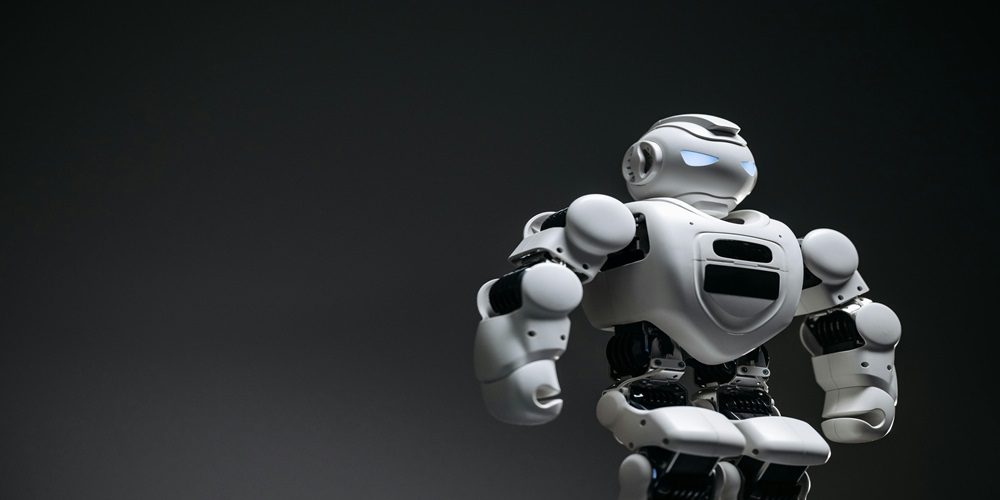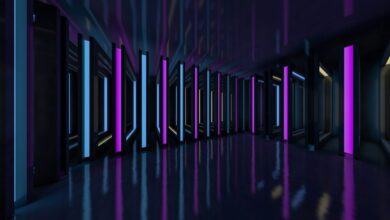The Power of Deep Learning: How Artificial Intelligence Enhances Robot Performance

Imagine a world where robots are not just limited to pre-programmed tasks, but can learn and adapt on their own. Thanks to the power of deep learning and artificial intelligence, this futuristic vision is becoming a reality. In this blog post, we will explore how AI enhances robot performance, revolutionizing industries and paving the way for more intelligent machines. Join us as we delve into the exciting possibilities of this cutting-edge technology.
Artificial intelligence (AI) is a broad field of computer science that focuses on creating intelligent machines that can think, learn, and make decisions like humans. It is a rapidly growing field with many applications in various industries, including robotics.
One subset of AI that has gained significant attention in recent years is deep learning. This advanced form of machine learning uses multi-layered neural networks to learn from data and improve its performance over time. Deep learning has been transformative for the field of robotics, enabling robots to perform complex tasks with speed and accuracy.
Deep learning algorithms are inspired by the structure and function of the human brain. They consist of multiple layers of interconnected processing units called neurons that work together to analyze data. These layers allow the system to extract features from raw data and build increasingly complex representations as it progresses through each layer.
The key component of deep learning is the training process, where vast amounts of data are fed into the algorithm so it can learn how to perform a task without being explicitly programmed. This allows deep learning models to continuously improve their performance through exposure to more data, making them highly adaptable and capable of handling complex tasks.
One significant application of deep learning in robotics is object recognition. Through training on large datasets containing images or videos, deep learning algorithms can accurately identify objects in real-time, even in cluttered or noisy environments. This capability enables robots to navigate their surroundings autonomously and safely interact with humans or other objects.
Another area where deep learning has enhanced robot performance is natural language processing (NLP). By leveraging recurrent neural networks (RNNs), robots can understand spoken commands or conversation contextually. This technology allows them to communicate effectively with humans or other machines, providing more natural interaction experiences.
How Deep Learning Enhances Robot Performance
Deep learning is a subset of artificial intelligence that has revolutionized the field of robotics. By mimicking the human brain’s ability to learn and adapt, deep learning algorithms have greatly enhanced the performance and capabilities of robots. In this section, we will delve deeper into how exactly deep learning is able to enhance robot performance.
First and foremost, deep learning enables robots to process large amounts of data and make sense of it in real-time. This is achieved through neural networks – a series of interconnected nodes designed to mimic biological neurons. These networks are trained using vast amounts of data, which allows them to recognize patterns and make predictions based on new inputs. In the context of robotics, this means that robots equipped with deep learning algorithms can make decisions on their own without being pre-programmed for every possible scenario they may encounter.
One key advantage of utilizing deep learning in robotics is its ability to handle complex tasks with high accuracy. Traditional robotic systems rely heavily on rules-based programming which requires engineers to program each individual step for a specific task. This approach becomes impractical when faced with dynamic environments where unexpected situations may arise. Deep learning helps overcome this limitation as it enables robots to learn from their mistakes and continuously improve their performance over time.
Another noteworthy feature of deep learning is its ability to handle unstructured data such as images, videos, or voice inputs. This has opened up possibilities for robots to interact more seamlessly with humans in various settings such as customer service or education. For example, chatbots equipped with natural language processing (NLP) can understand and respond appropriately to written or spoken queries from users.
Additionally, deep learning also improves robot perception by enabling them to interpret sensory information more accurately. Robots equipped with computer vision using deep learning algorithms can identify objects in their surroundings with remarkable precision even under challenging conditions like low light or occlusions.
Furthermore, one aspect that sets apart deep learning-powered robots from traditional ones is adaptability. As deep learning algorithms learn and adapt based on data inputs, they can quickly adjust to new environments or tasks without the need for reprogramming. This makes them ideal for use in dynamic and unpredictable settings such as search and rescue operations or space exploration.
Real-Life Examples of AI-Powered Robots
To give a better understanding of how AI-powered robots are being used in real-life scenarios, let’s take a look at some examples:
1. Boston Dynamics’ Spot Robot: Spot is a four-legged robot developed by Boston Dynamics that uses deep learning algorithms for navigation and obstacle avoidance. It can traverse through rough terrains, climb stairs, and even open doors with its robotic arm. Through continuous data collection and analysis, Spot’s movements have become more fluid and natural, making it an ideal option for various industries such as construction, security, and agriculture.
2. Google’s Self-Driving Car: Google’s self-driving car project – Waymo – uses deep learning techniques to analyze camera footage from the vehicle’s surroundings and make decisions accordingly. This includes detecting objects on the road, predicting their movement, and planning a safe route. The system learns from every mile driven on different roads and weather conditions to improve its performance continuously.
3. Surgical Robots: In the medical field, several surgical robots utilize AI algorithms to enhance precision during surgeries. For instance, Intuitive Surgical’s da Vinci Surgical System incorporates deep learning methods to assist surgeons in performing delicate procedures with greater accuracy than traditional methods.
4. Smart Agriculture Robots: With growing population demands for food production increases while labor availability decreases resulting in high-value unsold fruit & vegetables being wasted due musle damage during harvesting process now new environmental friendly robot designed by Fieldwork Robotics using sophisticated vision systems & reinforcement learning algorithms specifically trained on these crops are deployed to navigate through fields autonomously while selectively picking high-quality fruits and vegetables without damaging plant or produce.
These are just a few examples of how deep learning and AI have revolutionized the field of robotics. With continuous advancements in technology and the continuous integration of AI algorithms into robots, we can expect to see even more innovative applications that improve efficiency and productivity in various industries.
Advantages of Using Artificial Intelligence in Robotics
1. Increased Efficiency:
One of the primary advantages of using AI in robotics is increased efficiency. With advanced algorithms and machine learning techniques, robots can analyze data, make decisions, and perform tasks at speeds that far surpass human capabilities. This results in faster production processes and reduced downtimes, ultimately leading to increased productivity and cost-effectiveness.
2. Precision and Accuracy:
AI-powered robots are designed to be highly precise and accurate in their actions. They can perceive their environment through sensors and cameras to make real-time adjustments while performing tasks with utmost accuracy. This ability makes them ideal for carrying out repetitive tasks or those that require a high degree of precision, such as assembly line work or surgery.
3. Adaptability:
Unlike traditional robots that are programmed to perform specific tasks only, AI-enabled robots have the capability to adapt and learn from their surroundings. With deep learning technology, they can process vast amounts of data quickly and adjust their actions accordingly without any human intervention. This makes them highly flexible for use in diverse environments and applications.
4.Ultimate Safety:
With advanced AI algorithms integrated into robotic systems, safety concerns have been significantly reduced. This is especially true when it comes to hazardous or dangerous tasks where human involvement may pose a risk. By delegating these tasks to robots equipped with deep learning capabilities, companies can ensure employee safety while still maintaining maximum productivity.
5.Cost-Effectiveness:
Integrating AI technology into traditional robotic systems eliminates the need for constant programming updates or customizations for each task or environment change—an expensive practice usually associated with conventional industrial robots – saving both time and money for companies investing in automation.
6.Improved Decision Making:
Incorporating AI technology into robots also provides them with the ability to process and analyze vast amounts of data in real-time, making them capable of making informed decisions. This allows them to adapt to changing situations autonomously and make accurate decisions based on objective data, ultimately enhancing their performance.
Challenges and Limitations of Deep Learning in Robotics
One major challenge in using deep learning for robots is data acquisition. Deep learning algorithms require large amounts of data to be able to accurately and efficiently perform tasks. This means that for a robot to effectively use deep learning, it must have access to a vast amount of high-quality data. Acquiring this data can be difficult and time-consuming, especially in dynamic environments where the robot is constantly interacting with new objects or scenarios.
Another limitation of deep learning in robotics is the need for extensive training and fine-tuning. Deep learning models are highly dependent on training data and require significant processing power to train successfully. This not only adds complexity to the development process but also increases the cost of implementing deep learning in robotic systems.
Furthermore, the performance of deep learning algorithms can also be affected by changes in environmental conditions or variations in objects they encounter. For example, a self-driving car may struggle to identify road signs during heavy rain or snow due to changes in lighting and visibility. This requires constant updates and adaptations in training data for the algorithm to remain accurate.
Another issue with using deep learning techniques in robotics is their inability to handle rare events or novel situations. Robots trained solely on existing datasets may struggle when faced with new tasks or objects that were not encountered during training. This requires continuous re-training and updating of algorithms, which can become impractical for real-time applications.
Additionally, some critics argue that relying too heavily on deep learning can lead to a lack of interpretability and transparency in decision-making processes within robots. As these systems become more complex, it becomes increasingly challenging for humans to understand why a particular decision was made by the machine based on its learned model.
Future Possibilities of AI in Robotics
The rise of deep learning and artificial intelligence has paved the way for endless possibilities in the field of robotics. As technology continues to advance and researchers continue to push the boundaries of what is possible, there is no doubt that AI will play a crucial role in shaping the future of robotics.
One of the most exciting prospects for AI in robotics is its potential to enhance human-robot interaction. With advancements in natural language processing, robots can now understand and respond to human commands and instructions more accurately than ever before. This opens up a world of potential applications, from robots assisting with household tasks to working alongside humans in industries like manufacturing or healthcare.
Another area where AI is expected to make significant contributions is in autonomous robots. These are self-directed machines that can navigate their environment without any human intervention. With deep learning algorithms, these robots can continuously learn and adapt to new situations, making them well-suited for tasks such as search-and-rescue missions or exploration of unknown environments.
In addition, AI has the potential to improve robot perception capabilities. Through computer vision and object recognition algorithms, robots can detect and identify objects with greater accuracy than ever before. This makes them ideal for tasks that require precise manipulation or navigation through cluttered environments.
Furthermore, AI-powered robotics also brings new possibilities for collaboration between humans and machines. As machines become more intelligent and capable through deep learning techniques, they can work side by side with humans on complex tasks that require both cognitive abilities and physical dexterity.
But perhaps one of the most promising applications of AI in robotics lies in personalized robotics – where robots are specifically designed to fit individual needs and preferences. By analyzing data on an individual’s behavior patterns, environment, and goals through machine learning algorithms, personalized robotic assistants could be tailored precisely to meet their unique requirements.
Conclusion
In conclusion, it is undeniable that deep learning and artificial intelligence play a crucial role in enhancing robot performance. With the ability to learn and adapt from data, these technologies enable robots to perform tasks with greater accuracy and efficiency, making them essential tools in various industries such as manufacturing, medicine, and space exploration. As we continue to advance in this field, the potential for robotic capabilities will only continue to grow. The power of deep learning is truly transforming the way we interact with technology and shaping our future for the better.





